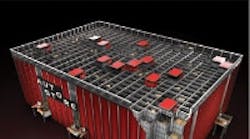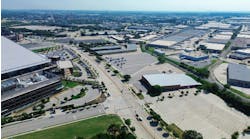Distribution centers are losing an average of nearly $390,000 per year due to mis-picks, according to a study conducted by Intermec, Inc. The study surveyed 250 senior supply chain and distribution managers across the U.S., U.K., France and Germany, spanning industries including retail, manufacturing, distribution, transport, chemicals, logistics, pharmaceuticals, wholesale and FMCG. It found the average mis-pick costs approximately $22, with more than half (52%) of companies reporting a pick rate of less than 97%. A further 19 percent do not measure the costs of mis-picks in any form, suggesting that the accumulated losses to the supply chain may be higher.
Companies that recently conducted a workflow process review found picking (47%) a key area where cost savings could most easily be achieved. For those using “The Perfect Order” metric, opportunities for increased savings were clear, with complete shipments (43%) seen as the most profitable to the bottom line.
Improving Profit Margins
With nearly eight out of ten (79%) managers responsible for finding a 19 percent cost saving, on average, from existing operations, managers are taking a closer look at existing processes and technology.
Nearly three-quarters (74%) of managers believe that increasing automation within the distribution center would have the greatest impact in increasing profitability. The same percentage also believe this to be true for adoption of new technology
Despite this, more than half (51%) believe that ensuring adoption of new technology by workers is a “big challenge.”
Nearly the same number (49%) claim that being able to pinpoint areas in the distribution center where investment would yield the greatest result is difficult to achieve.
More than two-thirds (68%) believe worker mobility and flexibility is key to improving profitability—a sentiment felt strongest in the U.S. (76%) and U.K. (84%).
Technology in the workplace
Nearly one in four (23%) of companies are still using paper to conduct distribution center processes. Despite the continued use of paper, the vast majority of companies agree that up-to-date technology is needed to improve distribution center performance. Multi-functional devices, for example, are seen by 72% of managers as critical to ensuring workers are flexible and equipped to do more.
Growing technology trends include the use of RFID, with more than half (52%) of managers using this within the distribution center. This is highest in Germany at 60%. Close to a quarter (24%) of all managers currently use voice-directed work.
“This research reaffirms just how much customer service levels and overall business profitability are affected by not meeting the Perfect Order Index goals,” said Bruce Stubbs, Intermec’s industry marketing director for distribution center operations. “If left unmanaged, this will continue to erode overall revenues and performance. Faced with these losses, and in light of the cost savings that must be achieved across the distribution center, continued resistance to the processes and tools that can make a difference is no longer an option.”




